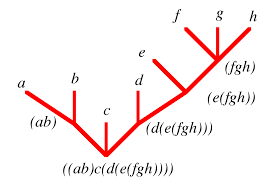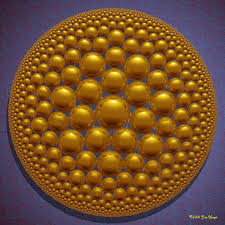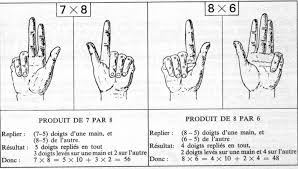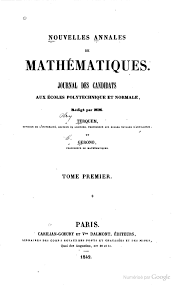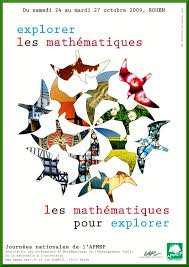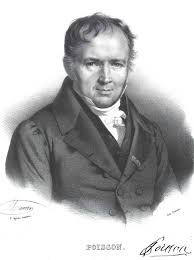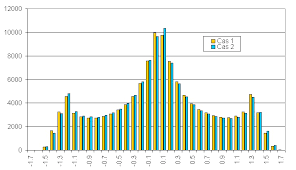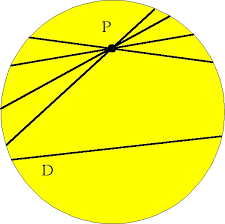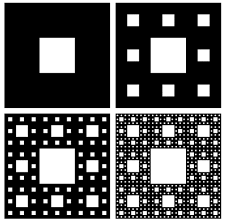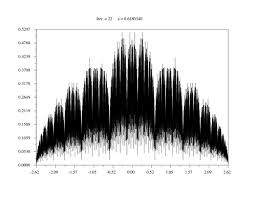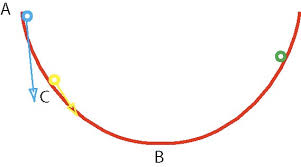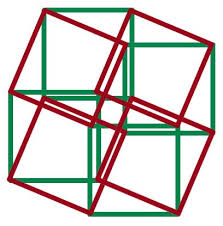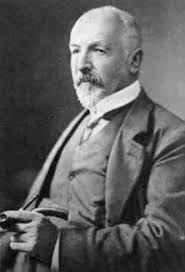11/12/2010
Babylonian numerals
Babylonian numerals
| Babylonian index | History Topics Index |
The Babylonian civilisation in Mesopotamia replaced the Sumerian civilisation and the Akkadian civilisation. We give a little historical background to these events in our article Babylonian mathematics. Certainly in terms of their number system the Babylonians inherited ideas from the Sumerians and from the Akkadians. From the number systems of these earlier peoples came the base of 60, that is the sexagesimal system. Yet neither the Sumerian nor the Akkadian system was a positional system and this advance by the Babylonians was undoubtedly their greatest achievement in terms of developing the number system. Some would argue that it was their biggest achievement in mathematics.
Often when told that the Babylonian number system was base 60 people's first reaction is: what a lot of special number symbols they must have had to learn. Now of course this comment is based on knowledge of our own decimal system which is a positional system with nine special symbols and a zero symbol to denote an empty place. However, rather than have to learn 10 symbols as we do to use our decimal numbers, the Babylonians only had to learn two symbols to produce their base 60 positional system.
Now although the Babylonian system was a positional base 60 system, it had some vestiges of a base 10 system within it. This is because the 59 numbers, which go into one of the places of the system, were built from a 'unit' symbol and a 'ten' symbol.

Here are the 59 symbols built from these two symbols
Now given a positional system one needs a convention concerning which end of the number represents the units. For example the decimal 12345 represents
1
104 + 2
103 + 3
102 + 4
10 + 5.
If one thinks about it this is perhaps illogical for we read from left to right so when we read the first digit we do not know its value until we have read the complete number to find out how many powers of 10 are associated with this first place. The Babylonian sexagesimal positional system places numbers with the same convention, so the right most position is for the units up to 59, the position one to the left is for 60  n where 1 ≤ n ≤ 59, etc. Now we adopt a notation where we separate the numerals by commas so, for example, 1,57,46,40 represents the sexagesimal number
n where 1 ≤ n ≤ 59, etc. Now we adopt a notation where we separate the numerals by commas so, for example, 1,57,46,40 represents the sexagesimal number
1
603 + 57
602 + 46
60 + 40
which, in decimal notation is 424000.

Here is 1,57,46,40 in Babylonian numerals
Now there is a potential problem with the system. Since two is represented by two characters each representing one unit, and 61 is represented by the one character for a unit in the first place and a second identical character for a unit in the second place then the Babylonian sexagesimal numbers 1,1 and 2 have essentially the same representation. However, this was not really a problem since the spacing of the characters allowed one to tell the difference. In the symbol for 2 the two characters representing the unit touch each other and become a single symbol. In the number 1,1 there is a space between them.
A much more serious problem was the fact that there was no zero to put into an empty position. The numbers sexagesimal numbers 1 and 1,0, namely 1 and 60 in decimals, had exactly the same representation and now there was no way that spacing could help. The context made it clear, and in fact despite this appearing very unsatisfactory, it could not have been found so by the Babylonians. How do we know this? Well if they had really found that the system presented them with real ambiguities they would have solved the problem - there is little doubt that they had the skills to come up with a solution had the system been unworkable. Perhaps we should mention here that later Babylonian civilisations did invent a symbol to indicate an empty place so the lack of a zero could not have been totally satisfactory to them.
An empty place in the middle of a number likewise gave them problems. Although not a very serious comment, perhaps it is worth remarking that if we assume that all our decimal digits are equally likely in a number then there is a one in ten chance of an empty place while for the Babylonians with their sexagesimal system there was a one in sixty chance. Returning to empty places in the middle of numbers we can look at actual examples where this happens.
Here is an example from a cuneiform tablet (actually AO 17264 in the Louvre collection in Paris) in which the calculation to square 147 is carried out. In sexagesimal 147 = 2,27 and squaring gives the number 21609 = 6,0,9.

Here is the Babylonian example of 2,27 squared
Perhaps the scribe left a little more space than usual between the 6 and the 9 than he would have done had he been representing 6,9.
Now if the empty space caused a problem with integers then there was an even bigger problem with Babylonian sexagesimal fractions. The Babylonians used a system of sexagesimal fractions similar to our decimal fractions. For example if we write 0.125 then this is 1/10 + 2/100 + 5/1000 = 1/8. Of course a fraction of the form a/b, in its lowest form, can be represented as a finite decimal fraction if and only if b has no prime divisors other than 2 or 5. So 1/3 has no finite decimal fraction. Similarly the Babylonian sexagesimal fraction 0;7,30 represented 7/60 + 30/3600 which again written in our notation is 1/8.
Since 60 is divisible by the primes 2, 3 and 5 then a number of the form a/b, in its lowest form, can be represented as a finite decimal fraction if and only if b has no prime divisors other than 2, 3 or 5. More fractions can therefore be represented as finite sexagesimal fractions than can as finite decimal fractions. Some historians think that this observation has a direct bearing on why the Babylonians developed the sexagesimal system, rather than the decimal system, but this seems a little unlikely. If this were the case why not have 30 as a base? We discuss this problem in some detail below.
Now we have already suggested the notation that we will use to denote a sexagesimal number with fractional part. To illustrate 10,12,5;1,52,30 represents the number
10
602 + 12
60 + 5 + 1/60 + 52/602 + 30/603
which in our notation is 36725 1/32. This is fine but we have introduced the notation of the semicolon to show where the integer part ends and the fractional part begins. It is the "sexagesimal point" and plays an analogous role to a decimal point. However, the Babylonians has no notation to indicate where the integer part ended and the fractional part began. Hence there was a great deal of ambiguity introduced and "the context makes it clear" philosophy now seems pretty stretched. If I write 10,12,5,1,52,30 without having a notation for the "sexagesimal point" then it could mean any of:
0;10,12, 5, 1,52,30
10;12, 5, 1,52,30
10,12; 5, 1,52,30
10,12, 5; 1,52,30
10,12, 5, 1;52,30
10,12, 5, 1,52;30
10,12, 5, 1,52,30
in addition, of course, to 10, 12, 5, 1, 52, 30, 0 or 0 ; 0, 10, 12, 5, 1, 52, 30 etc.
Finally we should look at the question of why the Babylonians had a number system with a base of 60. The easy answer is that they inherited the base of 60 from the Sumerians but that is no answer at all. It only leads us to ask why the Sumerians used base 60. The first comment would be that we do not have to go back further for we can be fairly certain that the sexagesimal system originated with the Sumerians. The second point to make is that modern mathematicians were not the first to ask such questions. Theon of Alexandria tried to answer this question in the fourth century AD and many historians of mathematics have offered an opinion since then without any coming up with a really convincing answer.
Theon's answer was that 60 was the smallest number divisible by 1, 2, 3, 4, and 5 so the number of divisors was maximised. Although this is true it appears too scholarly a reason. A base of 12 would seem a more likely candidate if this were the reason, yet no major civilisation seems to have come up with that base. On the other hand many measures do involve 12, for example it occurs frequently in weights, money and length subdivisions. For example in old British measures there were twelve inches in a foot, twelve pennies in a shilling etc.
Neugebauer proposed a theory based on the weights and measures that the Sumerians used. His idea basically is that a decimal counting system was modified to base 60 to allow for dividing weights and measures into thirds. Certainly we know that the system of weights and measures of the Sumerians do use 1/3 and 2/3 as basic fractions. However although Neugebauer may be correct, the counter argument would be that the system of weights and measures was a consequence of the number system rather than visa versa.
Several theories have been based on astronomical events. The suggestion that 60 is the product of the number of months in the year (moons per year) with the number of planets (Mercury, Venus, Mars, Jupiter, Saturn) again seems far fetched as a reason for base 60. That the year was thought to have 360 days was suggested as a reason for the number base of 60 by the historian of mathematics Moritz Cantor. Again the idea is not that convincing since the Sumerians certainly knew that the year was longer than 360 days. Another hypothesis concerns the fact that the sun moves through its diameter 720 times during a day and, with 12 Sumerian hours in a day, one can come up with 60.
Some theories are based on geometry. For example one theory is that an equilateral triangle was considered the fundamental geometrical building block by the Sumerians. Now an angle of an equilateral triangle is 60° so if this were divided into 10, an angle of 6° would become the basic angular unit. Now there are sixty of these basic units in a circle so again we have the proposed reason for choosing 60 as a base. Notice this argument almost contradicts itself since it assumes 10 as the basic unit for division!
I [EFR] feel that all of these reasons are really not worth considering seriously. Perhaps I've set up my own argument a little, but the phrase "choosing 60 as a base" which I just used is highly significant. I just do not believe that anyone ever chose a number base for any civilisation. Can you imagine the Sumerians setting set up a committee to decide on their number base - no things just did not happen in that way. The reason has to involve the way that counting arose in the Sumerian civilisation, just as 10 became a base in other civilisations who began counting on their fingers, and twenty became a base for those who counted on both their fingers and toes.
Here is one way that it could have happened. One can count up to 60 using your two hands. On your left hand there are three parts on each of four fingers (excluding the thumb). The parts are divided from each other by the joints in the fingers. Now one can count up to 60 by pointing at one of the twelve parts of the fingers of the left hand with one of the five fingers of the right hand. This gives a way of finger counting up to 60 rather than to 10. Anyone convinced?
A variant of this proposal has been made by others. Perhaps the most widely accepted theory proposes that the Sumerian civilisation must have come about through the joining of two peoples, one of whom had base 12 for their counting and the other having base 5. Although 5 is nothing like as common as 10 as a number base among ancient peoples, it is not uncommon and is clearly used by people who counted on the fingers of one hand and then started again. This theory then supposes that as the two peoples mixed and the two systems of counting were used by different members of the society trading with each other then base 60 would arise naturally as the system everyone understood.
I have heard the same theory proposed but with the two peoples who mixed to produce the Sumerians having 10 and 6 as their number bases. This version has the advantage that there is a natural unit for 10 in the Babylonian system which one could argue was a remnant of the earlier decimal system. One of the nicest things about these theories is that it may be possible to find written evidence of the two mixing systems and thereby give what would essentially amount to a proof of the conjecture. Do not think of history as a dead subject. On the contrary our views are constantly changing as the latest research brings new evidence and new interpretations to light.
References (9 books/articles)
Other Web sites:
Astroseti (A Spanish translation of this article)
Article by: J J O'Connor and E F Robertson
JOC/EFR December 2000
The URL of this page is:
http://www-history.mcs.st-andrews.ac.uk/HistTopics/Babylonian_numerals.html
Source : http://www-groups.dcs.st-and.ac.uk/~history/HistTopics/Ba...
12:01 Publié dans Babylonian numerals | Lien permanent | Commentaires (0) |  |
|  del.icio.us |
del.icio.us |  |
|  Digg |
Digg | ![]() Facebook
Facebook











